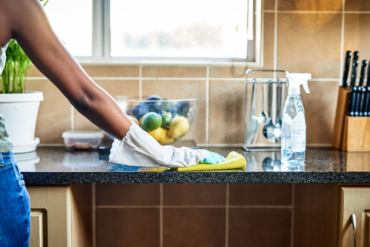In the bustling realm of commercial settings, the significance of kitchen sanitation cannot be overstated. A clean and hygienic kitchen is the heart of any food establishment, ensuring not only the quality of the cuisine but also the health and safety of staff and patrons. In this blog post, we delve into the essential practices of maintaining a spotless and hygienic commercial kitchen, emphasizing the critical role of cleanliness in the culinary world.
The Impact of Kitchen Sanitation on Health and Safety
The health of both staff and customers hinges on the cleanliness of a commercial kitchen. The risks associated with unsanitary environments are not to be taken lightly, as they can result in foodborne illnesses and the alarming spread of cross-contamination. Effective sanitation practices, supported by professional kitchen cleaning services, go hand in hand with compliance with food safety regulations, safeguarding both reputation and well-being. Cleanliness is the cornerstone of a safe and thriving culinary operation.
Understanding Kitchen Hotspots and Cleaning Frequency
In the intricate landscape of a commercial kitchen, certain areas are particularly prone to contamination. Countertops, cooking equipment, and floors are high-touch zones that demand special attention. Key to maintaining cleanliness is understanding the concept of high-touch surfaces, those hotspots that become breeding grounds for germs. Establishing a cleaning schedule based on usage patterns is crucial, ensuring that busy areas are cleaned more frequently to curb the spread of potential contaminants.
Maintaining hygiene in these high-touch areas not only promotes food safety but also enhances the overall efficiency of kitchen operations. Regular and thorough cleaning of these hotspots not only prevents the buildup of dirt, grease, and pathogens but also contributes to a positive impression on customers and inspectors, reflecting the establishment’s commitment to quality and sanitation standards. Therefore, a comprehensive understanding of these kitchen hotspots and a well-structured cleaning regimen are essential pillars of a successful and reputable commercial kitchen.
The Expert Approach: Best Practices for Commercial Kitchen Cleaning
Preparing the Kitchen for Cleaning: Before embarking on the cleaning process, removing clutter and organizing the space are essential steps. Equally important is wearing appropriate personal protective equipment (PPE) to ensure the safety of cleaning staff. The segregation of cleaning tools is vital to prevent cross-contamination during the process.
Cleaning Surfaces and Equipment: Countertops, cutting boards, and prep surfaces must be meticulously cleaned to prevent the accumulation of bacteria. Degreasing and sanitizing cooking equipment are crucial steps to maintain safe cooking conditions. Industry-approved cleaning agents are a must for effectively eliminating germs and contaminants.
Tackling High-Touch Areas: In the era of heightened awareness, high-touch areas like door handles, faucets, and light switches are of paramount concern. Regular cleaning and disinfecting of these areas contribute significantly to reducing the risk of germs spreading. The use of disinfectants approved for kitchen use ensures both safety and efficacy.
Floors, Drains, and Ventilation: Clean floors and unclogged drains are vital for preventing slips, trips, and falls, as well as maintaining a clean environment. Adequate ventilation and a well-maintained exhaust system contribute to the removal of cooking odors and smoke, enhancing overall air quality in the kitchen.
Storage and Waste Management: Proper food storage and labeling minimize the risk of contamination and ensure the freshness of ingredients. Efficient commercial waste management prevents pest infestations and promotes a clean workspace. Regular garbage disposal and cleaning of bins are integral to preventing unsanitary conditions.
Monitoring and Quality Control: Regular inspections and audits of the kitchen’s cleanliness levels can help identify any gaps or areas that require improvement. Feedback from staff, as well as incorporating customer input, can provide valuable insights into the effectiveness of the cleaning process. Continuous monitoring ensures that high standards are consistently met.
Conclusion: Elevating Kitchen Hygiene for a Safer Future
In the dynamic world of commercial kitchens, cleanliness is a non-negotiable aspect of success. Effective kitchen sanitation practices not only guarantee the safety of both customers and staff but also uphold the integrity of the establishment. By implementing these best practices, businesses can pave the way for a future where hygiene takes center stage. Prioritize kitchen cleanliness, invest in expert cleaning services, and ensure the longevity and success of your culinary endeavors.





